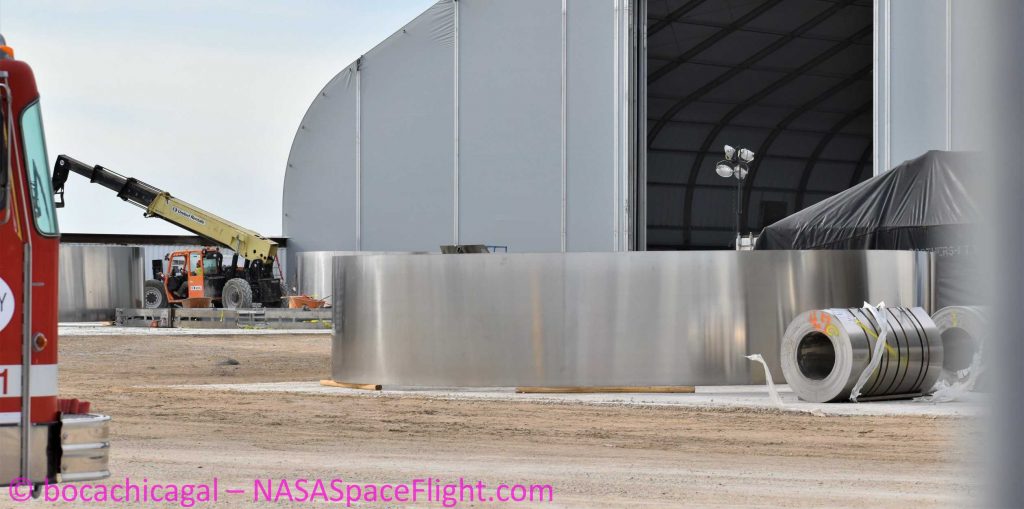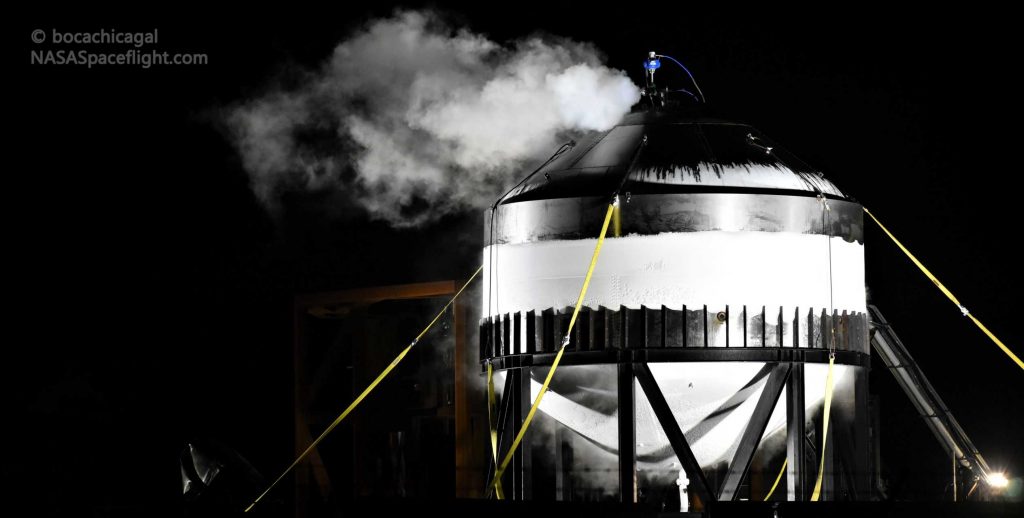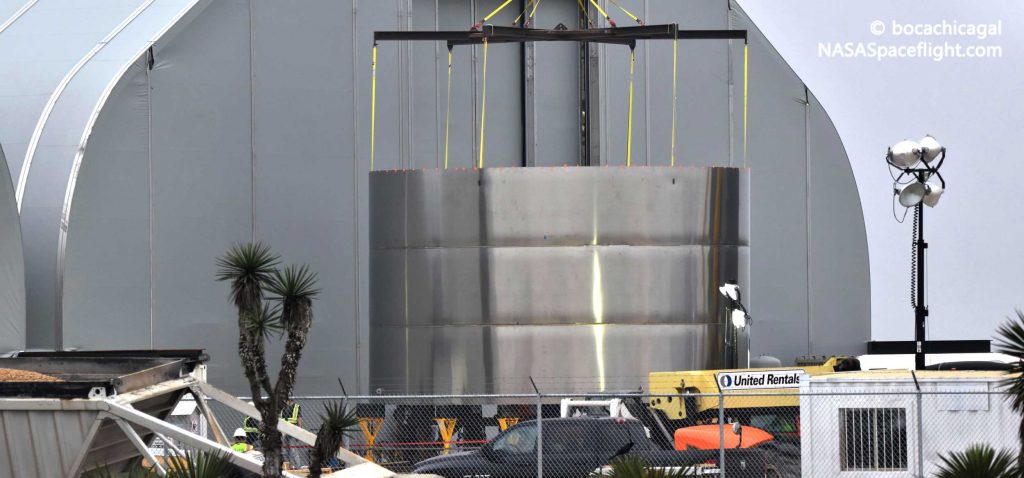Update: In a Twitter response to this article, SpaceX CEO Elon Musk says that the reality of things is unsurprisingly a bit more complex. As noted, the standards and requirements for aerospace hardware are much stricter than those needed for the water towers, storage tanks, and other utilities that existing commercial solutions are commonly used to build.
As such, it’s inaccurate to suggest that those off-the-shelf solutions are capable of building rockets right out of the box. Still, several pieces of commercial fabrication equipment from providers like IMCAR have been spotted in use at SpaceX’s Boca Chica, Texas Starship facilities. With “substantial capital and engineering” investments into making those solutions more precise, however, SpaceX may still be able to use existing hardware – or at least the concepts they underly – to rapidly build high-quality Starships and Super Heavy boosters.
A SpaceX engineer says that the company wants to adopt commercially-available manufacturing equipment that could allow its Boca Chica, Texas team to build Starship tank parts in minutes and nearly-complete rocket bodies in a matter of days.
Originally created to meet the needs of a variety of different companies – typically oil and gas related – that need efficient, affordable, and standardized storage tanks, a small but growing niche exists for semi-automated tank production. While there is some clear uncertainty given that the quality and consistency required for oil and gas needs or even simple water storage likely isn’t the same needed to meet strict spaceflight margins, SpaceX has already acquired several production tools from existing contractors and is working around the clock to prove that those same tools can be used to build large, reusable rockets.
The gamble is simple: if it turns out that off-the-shelf (COTS) equipment can become an almost turnkey solution for manufacturing high-quality Starship spacecraft and Super Heavy boosters, SpaceX may have found a shortcut to orbit, avoiding the huge expense of finding and building its own custom production solutions. But is that COTS tank fabrication hardware truly up to the task?


At least right now, the simple answer is “yes”. Thanks to two highly successful destructive tests of Starship tank prototypes that wrapped up last month, SpaceX has confirmed that at least a subset of the available COTS solutions can be used to build Starships (theoretically) capable of orbital flight. To be clear, those tanks reached only the most basic kind of specification needed for a true orbital-class spacecraft, demonstrating that they can fairly easily survive the pressures required for Starship and its Super Heavy boosters to remain structurally sound from liftoff to touchdown.

For the most part, the only truly COTS aspect of those test tanks were the flat, cylindrical rings at their center – produced by cutting and welding together giant sheets of coiled steel. The tanks’ domes were more or less welded together by hand with the help of large jigs, while finished domes and rings were also welded together by hand. Given that the welds used to create the rings themselves have never obviously been a problem, the success of Starship’s two test tanks can thus be heavily attributed to skilled welders’ hands rather than any particular off-the-shelf solution.
Still, the fact of the matter is that automatic solutions like those currently available exist for good reason – aside from requiring far less labor to produce similar results, the consistency and quality of those results can actually be much better than anything that can be reliably achieved in a more boutique fashion. This is, at least, the promise of solutions like those shown below.
SpaceX certainly appears to be pursuing the best-case scenarios that could be made possible with some of the hardware shown above. Already, it looks like Starship ring segments – themselves formed and welded with semi-automated IMCAR hardware – are being stacked and tack welded (temporary welds used like clamps) inside one of SpaceX’s new tents before the stand holding those ring(s) rotates itself, automatically welding them together.

The three mated rings pictured above were assembled over the course of several days using some of those methods and COTS fabrication hardware. However, if SpaceX can refine its procedures – currently still in the oven, so to speak – and become an expert at modifying and using available tank fabrication hardware to fabricate rockets, the company could conceivably build entire Starship and Super Heavy bodies in a matter of days.
It might take a substantial amount of trial and error, but SpaceX is clearly well on its way.
Check out Teslarati’s newsletters for prompt updates, on-the-ground perspectives, and unique glimpses of SpaceX’s rocket launch and recovery processes.

(adsbygoogle = window.adsbygoogle || []).push({});
<!–
–>
var disqus_shortname = «teslarati»;
var disqus_title = «SpaceX Starship factory eyes cutting-edge industry solutions for inspiration [updated]»;
var disqus_url = «https://www.teslarati.com/spacex-starship-water-tower-manufacturing-tech/»;
var disqus_identifier = «teslarati-128901»;

